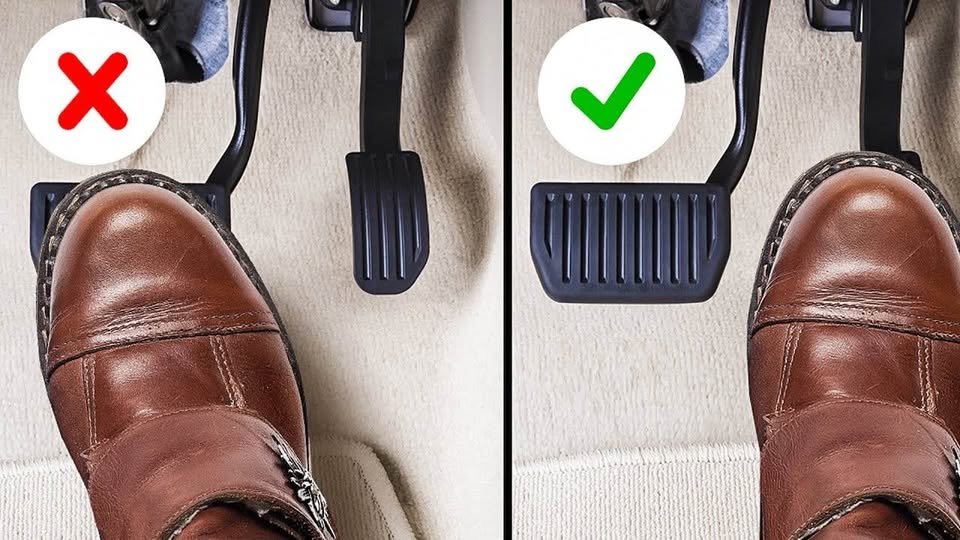Defensive driving is the practice of being proactive and anticipating potential hazards on the road. It’s about driving with caution, maintaining awareness, and being prepared for unexpected situations. By adopting defensive driving techniques, you can significantly reduce the chances of an accident and even save your life. Here are 15 defensive driving secrets that every driver should know:
1. Always Keep a Safe Following Distance
Tailgating is one of the most dangerous habits a driver can have. Maintaining a safe distance gives you more time to react if the vehicle in front of you suddenly stops or slows down.
- Secret: Use the 3-second rule: Choose a fixed object (like a sign or tree) and make sure there’s at least a 3-second gap between you and the vehicle ahead. Increase the distance in poor weather or when driving at higher speeds.
2. Be Aware of Blind Spots
Blind spots are areas around your vehicle that are not visible in your mirrors. Many accidents happen when drivers fail to check their blind spots before changing lanes.
- Secret: Always turn your head and look over your shoulder when changing lanes. Even if your mirrors are adjusted correctly, a quick glance ensures you don’t miss something.
3. Avoid Distractions
Distracted driving is one of the leading causes of accidents. Texting, talking on the phone, eating, or fiddling with the radio can take your attention away from the road.
- Secret: Put your phone on silent or in “Do Not Disturb” mode, and avoid eating or doing anything that takes your focus off the road while driving.
4. Use Your Mirrors Frequently
It’s easy to get complacent and only glance at your mirrors occasionally, but constantly checking your mirrors helps you stay aware of the traffic around you.
- Secret: Check your rearview and side mirrors every 5-8 seconds, especially when changing lanes, turning, or approaching intersections.
5. Know the “Four-second Rule” for Stopping
If you’re driving in wet, icy, or slippery conditions, increase your following distance to give yourself more time to stop.
- Secret: When road conditions are poor, aim for a four-second gap instead of the typical 3-second distance to allow extra time to react in an emergency.
6. Stay Alert to the Actions of Other Drivers
While you can’t control other drivers, you can anticipate their behavior. Be ready for sudden stops, lane changes, or erratic driving.
- Secret: Always assume that the driver around you might make a mistake. Keep your distance from aggressive drivers and be prepared to react.
7. Never Drive When Tired
Drowsy driving is just as dangerous as drunk driving. Fatigue affects your ability to make quick decisions and react to hazards.
- Secret: If you’re feeling tired, take a break, and pull over to rest. It’s always safer to stop and take a nap than to risk falling asleep at the wheel.
8. Be Cautious at Intersections
Intersections are high-risk areas for accidents, especially when you’re not sure whether another driver will run a red light or stop sign.
- Secret: Slow down and scan all directions before entering an intersection, even if you have the green light. Always be ready to stop for pedestrians or other drivers who may not follow the rules.
9. Signal Early and Often
Signal lights are designed to inform other drivers of your intentions. Failing to use your signal increases the risk of collisions.
- Secret: Always use your turn signals well in advance (at least 100 feet before your turn) to let other drivers know what you’re planning to do. Even if the road seems clear, signaling is a habit that can save lives.
10. Avoid Driving in the “No-Zone”
Large vehicles like trucks and buses have large blind spots, commonly referred to as the “no-zone.” These areas can be dangerous if you’re driving in them without being seen by the driver.
- Secret: Avoid driving directly in front, behind, or beside large trucks. If you can’t see the truck driver’s mirrors, they likely can’t see you.
11. Be Mindful of Weather Conditions
Rain, snow, fog, or icy conditions require adjustments in your driving. Reduced visibility and slippery roads can make even simple maneuvers more dangerous.
- Secret: Reduce your speed and increase your following distance during adverse weather. Use headlights in low-visibility conditions, and avoid sudden movements.
12. Don’t Drive in the “Danger Zone” at Night
Nighttime driving can be hazardous due to reduced visibility, glare from headlights, and fatigue. It’s important to stay especially cautious when driving after dark.
- Secret: Use high beams when possible, but always dim them when approaching other vehicles. Avoid looking directly at oncoming headlights, as this can impair your vision.
13. Be Extra Cautious Around Pedestrians and Cyclists
Pedestrians and cyclists are particularly vulnerable, and you should always give them the right of way, especially in crosswalks or areas with heavy foot traffic.
- Secret: Slow down in residential areas and be vigilant for pedestrians, particularly at dusk or in poorly lit areas. Always yield to cyclists when turning or changing lanes.
14. Use Defensive Parking Strategies
Don’t just focus on driving safely. Parking is also an area where accidents can happen, especially in crowded lots or garages.
- Secret: When parking, choose spots with plenty of space around you. Park further away to avoid crowded areas, and always back into parking spaces for better visibility when you leave.
15. Always Be Ready to React
Defensive driving is about anticipating what might happen and being ready to respond. Whether it’s a car suddenly cutting in front of you, a pedestrian stepping into the road, or another driver making an error, being ready to react can be the difference between avoiding an accident and being involved in one.
- Secret: Keep your hands on the wheel at all times, maintain a clear view of the road, and stay mentally prepared to make quick decisions.
Bonus: Stay Calm in Road Rage Situations
When faced with aggressive drivers, the best approach is to stay calm and avoid engaging. Road rage can escalate quickly, and staying level-headed is the key to staying safe.
- Secret: If someone is tailgating or driving aggressively toward you, avoid eye contact and stay out of their way. Don’t retaliate or speed up to challenge them—stay safe and let them pass.
By implementing these defensive driving secrets, you’ll not only make yourself a safer driver but also create a safer environment for others on the road. It’s about anticipating the unexpected, maintaining control, and always being prepared to react in a way that minimizes risk. Drive smart, stay alert, and keep safety as your top priority!



